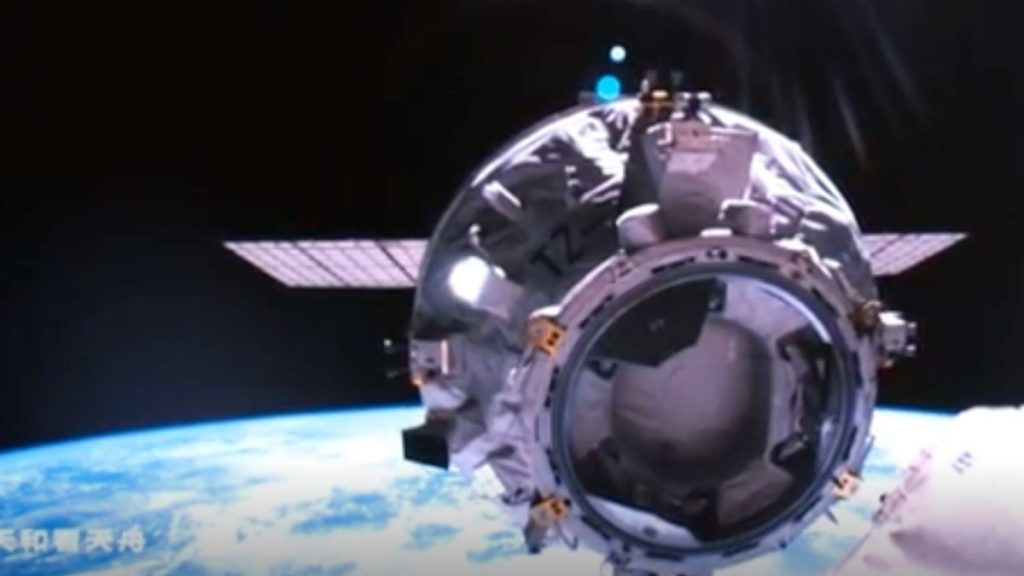China has deorbited a cargo spacecraft that earlier this year delivered supplies to the country’s space station.
That freighter, called Tianzhou 7, launched on a Long March 7 rocket from the Wenchang spaceport on Jan. 17, arriving at the Tiangong space station hours later. It delivered supplies for astronauts, experiments, materials and propellant to keep operations running smoothly aboard Tiangong.
The spacecraft, having performed its task and being loaded up with waste from Tiangong, undocked from the space station on Nov. 10.
Tianzhou 7 reentered Earth’s atmosphere at around 8:25 a.m. EST (1325 GMT; 9:25 p.m. Beijing time) on Nov. 17, according to China’s human spaceflight agency, CMSA.
Related: China launches Tianzhou 7 cargo craft to Tiangong space station (video)
The spacecraft was deorbited in a controlled manner, firing its engines to leave orbit and reenter the atmosphere. Though not explicitly stated, Tianzhou 7 was most likely deorbited over the South Pacific Ocean, an area known as the “spacecraft cemetery” and chosen for its remoteness.
CMSA published a video showing some of the final moments of the spacecraft, with an onboard camera showing flashes of heat and light as Tianzhou 7 began interacting with the atmosphere.
Tianzhou 7 also performed a final task just ahead of its reentry. It released a 6U cubesat named Bayi-08 on Nov. 16. The satellite carries a medium-resolution Earth observation camera, an optical communication payload for audio and video downlink, and is a popular science mission, according to the China Aerospace Science and Technology Corporation (CASC).
Meanwhile, operations aboard Tiangong continue. China launched its next resupply mission, Tianzhou 8, on Nov. 15. It mainly carried food to support the ongoing Shenzhou 19 crewed mission and the Shenzhou 20 mission due to launch in spring 2025, along with propellant and experiments — notably, bricks made from lunar soil simulant.

